
Degree: TRAL Sustainable Tourism Management, Class of 2020
Hometown: Eagle Point, OR
What is your major and how long have you been studying at OSU?
I am studying Tourism, Recreation, and Adventure Leadership (TRAL) with a focus in Sustainable Tourism Management. I transferred to OSU in the fall of 2018 from Ithaca College, New York.
What would you like to do professionally after you graduate?
I would love to create travel itineraries for a sustainable travel company, or lead groups on unique travel experiences. I thrive in unusual situations and enjoy showing people new experiences. As long as I’m outside and going new places, I’ll be happy!
Have you been involved in any clubs or activities on campus? What has your experience been like with these opportunities?
Yes, last year I got involved with the International Forestry Students’ Association (IFSA). I am our Local Committee’s secretary, and I really enjoy it! IFSA has been a wonderful opportunity to travel, meet new people, and exchange ideas on how to create a more sustainable future with fellow students.
Have you participated in any work experience (on-campus or related to your field) during your time as a student at OSU? Has this helped prepare you for a job after graduation?
Since the summer of 2018, I have worked at the College of Forestry International Programs office. Although most of the job involves working at a desk, I love it! I communicate with people around the world, I create events for the on-campus community, and I help market our programs to students interested in traveling abroad. This job has definitely given me a perspective of post-graduation life, which may not appear glamorous in the day-to-day, but has tremendous impact on a variety of audiences.
Have you participated in any experiential learning opportunities? How has this impacted your student experience?
In December, I embarked on a faculty-led program to Costa Rica with thirteen other TRAL, Forestry, and Natural Resources students. We traveled with OSU Cascade’s Ron Reuter and Andrew Hawley to the southern part of Costa Rica, where we backpacked, rafted, and chatted with local communities for two weeks. It was an unforgettable experience, and I still get shivers thinking of how we could see the concepts of community-based tourism in action.
Do you have a favorite College of Forestry course that you’ve taken? If so, why is it your favorite?
It’s impossible to pick just one! There are two courses that have tied for my favorite: Nature, Eco, and Adventure Tourism with Dr. Mark Needham, and Planning Sustainable Tourism with Dr. Ian Munanura. Mark Needham’s class was a wonderful introduction to the field of international tourism, its problems, and potential solutions. This class showed me the impact (both positive and negative) that tourism can create in the world. Ian Munanura’s class was a deep dive into everything that goes into sustainable tourism operations. It taught me the tough lesson that tourism is a massively complication field with many stakeholders, and there is never a single right answer.
What’s one thing (or piece of advice) that you would like incoming OSU students to know?
Chase what sparks you. Take the classes that sound interesting, and befriend the professor that you think is cool. Don’t be afraid to ask stupid questions to smart people.
How do you like going to school in Corvallis?
I love Corvallis. The campus is beautiful, and the town life is fantastic. There’s always something to do, whether it’s dance nights downtown or hikes in any of the nearby natural areas. Studying tourism and recreation here is particularly good because there are plenty of opportunities to go out and observe trails being used, new businesses opening, and people traveling and recreating.
Have you received any scholarships from OSU or the College of Forestry? If so, what has it helped you accomplish?
When I traveled to Costa Rica, I received some very generous funding from the Dean’s Investment Fund for International Engagement, which is available for any College of Forestry student interested in traveling abroad in order to pursue their interests through international study, research, and internships.



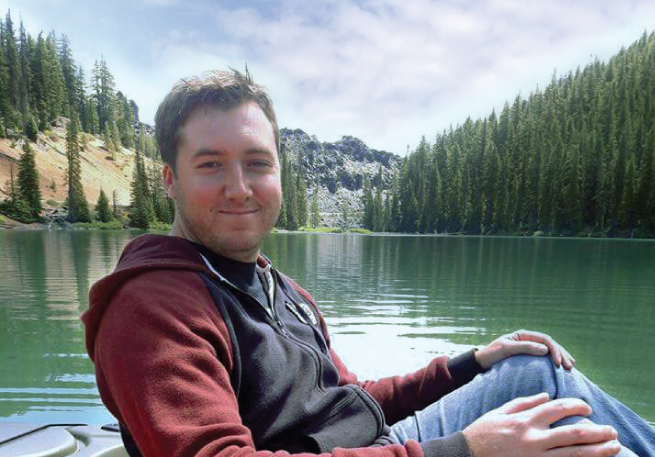
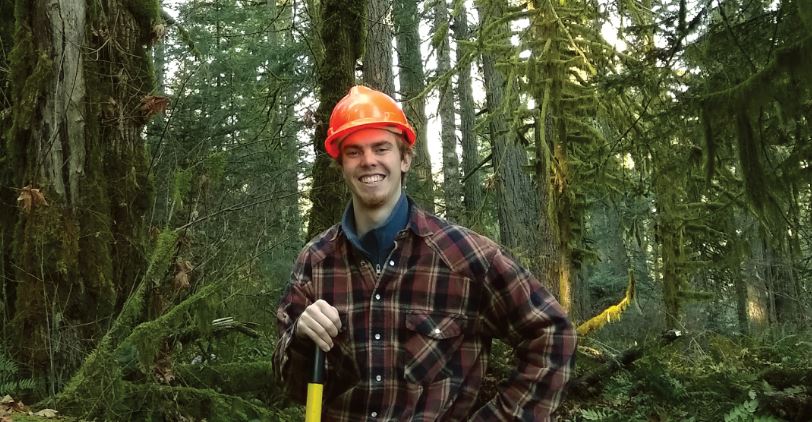

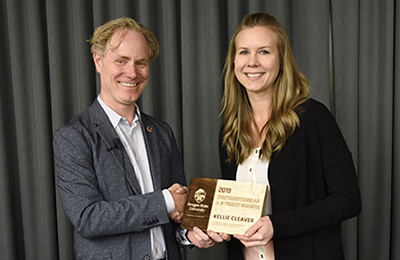


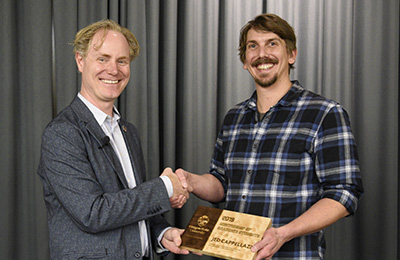


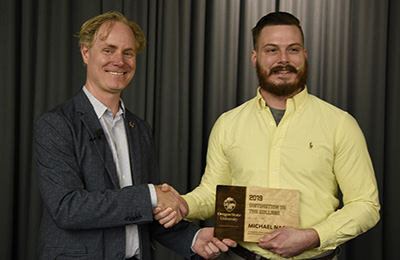

 This year’s Dean’s Dinner was held on May 14, after the grand opening of the A. A. “Red” Emmerson Advanced Wood Products Laboratory.
This year’s Dean’s Dinner was held on May 14, after the grand opening of the A. A. “Red” Emmerson Advanced Wood Products Laboratory.


